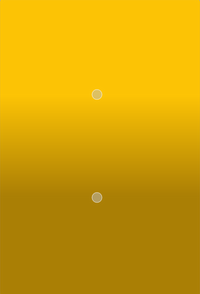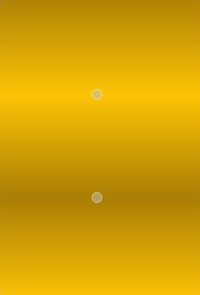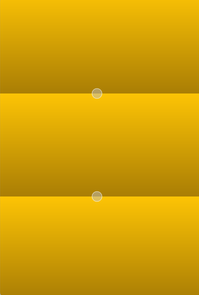QLinearGradient Class Reference |
 |  |  |
| PadSpread (default) | ReflectSpread | RepeatSpread |
The colors in a gradient is defined using stop points of the QGradientStop type, i.e. a position and a color. Use the QGradient::setColorAt() or the QGradient::setStops() function to define the stop points. It is the gradient's complete set of stop points that describes how the gradient area should be filled. If no stop points have been specified, a gradient of black at 0 to white at 1 is used.
In addition to the functions inherited from QGradient, the QLinearGradient class provides the finalStop() function which returns the final stop point of the gradient, and the start() function returning the start point of the gradient.
See also QRadialGradient, QConicalGradient, and The Gradients Demo.
Member Function Documentation
QLinearGradient::QLinearGradient ()
Constructs a default linear gradient with interpolation area between (0, 0) and (1, 1).
See also QGradient::setColorAt(), setStart(), and setFinalStop().
QLinearGradient::QLinearGradient ( const QPointF & start, const QPointF & finalStop )
Constructs a linear gradient with interpolation area between the given start point and finalStop.
Note: The expected parameter values are in pixels.
See also QGradient::setColorAt() and QGradient::setStops().
QLinearGradient::QLinearGradient ( qreal x1, qreal y1, qreal x2, qreal y2 )
Constructs a linear gradient with interpolation area between (x1, y1) and (x2, y2).
Note: The expected parameter values are in pixels.
See also QGradient::setColorAt() and QGradient::setStops().
QPointF QLinearGradient::finalStop () const
Returns the final stop point of this linear gradient in logical coordinates.
See also setFinalStop() and QGradient::stops().
void QLinearGradient::setFinalStop ( const QPointF & stop )
Sets the final stop point of this linear gradient in logical coordinates to stop.
This function was introduced in Qt 4.2.
See also finalStop().
void QLinearGradient::setFinalStop ( qreal x, qreal y )
This is an overloaded member function, provided for convenience.
Sets the final stop point of this linear gradient in logical coordinates to x, y.
This function was introduced in Qt 4.2.
See also start().
void QLinearGradient::setStart ( const QPointF & start )
Sets the start point of this linear gradient in logical coordinates to start.
This function was introduced in Qt 4.2.
See also start().
void QLinearGradient::setStart ( qreal x, qreal y )
This is an overloaded member function, provided for convenience.
Sets the start point of this linear gradient in logical coordinates to x, y.
This function was introduced in Qt 4.2.
See also start().
QPointF QLinearGradient::start () const
Returns the start point of this linear gradient in logical coordinates.
See also setStart() and QGradient::stops().
Best Of
Actualités les plus lues
- « Quelque chose ne va vraiment pas avec les développeurs "modernes" », un développeur à "l'ancienne" critique la multiplication des bibliothèques 53
- Quelles nouveautés de C++11 Visual C++ doit-il rapidement intégrer ? Donnez-nous votre avis 10
- Créer des applications avec un style Metro avec Qt, exemples en QML et C++, un article du blog Digia traduit par Thibaut Cuvelier 0
- Orientation de l'écran en QML, un article de Christophe Dumez traduit par Thibaut Cuvelier 0
- « Quelque chose ne va vraiment pas avec les développeurs "modernes" », un développeur à "l'ancienne" critique la multiplication des bibliothèques 53
- Les développeurs ignorent-ils trop les failles découvertes dans leur code ? Prenez-vous en compte les remarques des autres ? 17
- BlackBerry 10 : premières images du prochain OS de RIM qui devrait intégrer des widgets et des tuiles inspirées de Windows Phone 0
- Quelles nouveautés de C++11 Visual C++ doit-il rapidement intégrer ? Donnez-nous votre avis 10
- Adieu qmake, bienvenue qbs : Qt Building Suite, un outil déclaratif et extensible pour la compilation de projets Qt 17
- Apercevoir la troisième dimension ou l'utilisation multithreadée d'OpenGL dans Qt, un article des Qt Quarterly traduit par Guillaume Belz 0
- La rubrique Qt a besoin de vous ! 1

- Linus Torvalds : le "C++ est un langage horrible", en justifiant le choix du C pour le système de gestion de version Git 100
- Comment prendre en compte l'utilisateur dans vos applications ? Pour un développeur, « 90 % des utilisateurs sont des idiots » 229
- Quel est LE livre que tout développeur doit lire absolument ? Celui qui vous a le plus marqué et inspiré 96
- Apple cède et s'engage à payer des droits à Nokia, le conflit des brevets entre les deux firmes s'achève 158
- Nokia porte à nouveau plainte contre Apple pour violation de sept nouveaux brevets 158
- Quel est le code dont vous êtes le plus fier ? Pourquoi l'avez-vous écrit ? Et pourquoi vous a-t-il donné autant de satisfaction ? 83
- Le Draft final de la norme C++ 0X validé 181

Le blog Digia au hasard

Créer des applications avec un style Metro avec Qt, exemples en QML et C++, un article de Digia Qt traduit par Thibaut Cuvelier
Communauté
Ressources
- 91 cours et tutoriels Qt
- F.A.Q. Qt : 200 questions et réponses
- 48 Qt Quarterly, 35 Qt Labs et 22 Qt DevNet en français
- 43 outils Qt
- 99 sources Qt
- 26 binaires Qt
- 6 livres Qt et 9 critiques
- La documentation de Qt 4.7 en français : 157 classes, 70 concepts et 24 modules
- 3 certifications Qt
Liens utiles
Contact
- Vous souhaitez rejoindre la rédaction ou proposer un tutoriel, une traduction, une question... ? Postez dans le forum Contribuez ou contactez-nous par MP ou par email (voir en bas de page).
Qt dans le magazine
| Cette page est une traduction d'une page de la documentation de Qt, écrite par Nokia Corporation and/or its subsidiary(-ies). Les éventuels problèmes résultant d'une mauvaise traduction ne sont pas imputables à Nokia. | Qt 4.4 | |
| Copyright © 2012 Developpez LLC. Tous droits réservés Developpez LLC. Aucune reproduction, même partielle, ne peut être faite de ce site et de l'ensemble de son contenu : textes, documents et images sans l'autorisation expresse de Developpez LLC. Sinon, vous encourez selon la loi jusqu'à 3 ans de prison et jusqu'à 300 000 E de dommages et intérêts. Cette page est déposée à la SACD. | ||
| Vous avez déniché une erreur ? Un bug ? Une redirection cassée ? Ou tout autre problème, quel qu'il soit ? Ou bien vous désirez participer à ce projet de traduction ? N'hésitez pas à nous contacter ou par MP ! | ||
Copyright © 2000-2012 - www.developpez.com



















